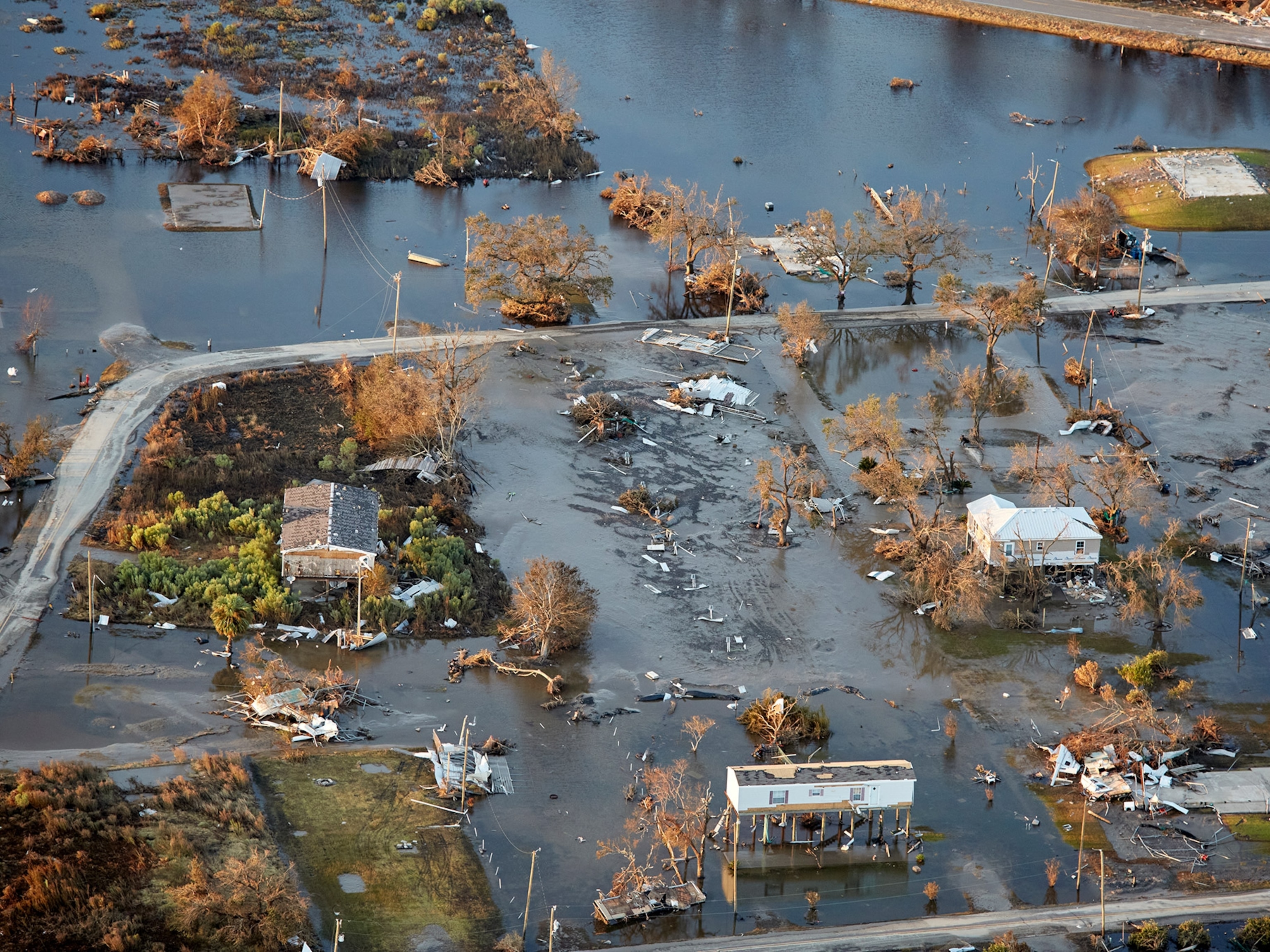
Report: Gulf and Atlantic Coasts Not Prepared for Sea-Level Rise
The National Research Council warns that U.S. coasts are at risk of flooding and storm damage, thanks to climate change.
The U.S. Atlantic and Gulf Coasts are not ready for the increased flooding and stronger storms that are expected from climate change, scientists say.
The National Research Council report, released today, warns that the past few years have seen "a dramatic rise in coastal-storm-related losses" along the Atlantic and Gulf of Mexico, thanks to an increase in population and a rise in the number of homes and other structures built in at-risk areas.
"There's a huge sense of urgency here," says Greg Baecher, one of the report's co-authors and a professor of civil and environmental engineering at the University of Maryland, College Park. (Read "Rising Seas" in National Geographic magazine.)
"Storms are getting more powerful, and the current scientific thinking is that's going to continue," he says. "We are not coordinated at different levels of government, and time is running out."
According to Richard A. Luettich, Jr., a professor of marine sciences at the University of North Carolina, Chapel Hill, and chair of the committee that wrote the report, it's time for the federal and state governments to work together more closely to reduce risk.
"There is a crucial need for collaboration among federal agencies and between the federal government and the states, as well as policy changes that will help us evolve from a nation that is primarily reactive to coastal disasters into one that invests wisely in risk reduction and resilience," he said in a statement.
Current planning for risks along the coasts is inadequate and has "no central leadership or unified vision," says the report, which had been commissioned by the U.S. Army Corps of Engineers.
Feds Paying Too Much
Today the federal government tends to bear the brunt of the costs after big disasters like Hurricane Katrina and Superstorm Sandy, but it wasn't always that way.
"The share of money paid by the federal taxpayer has increased substantially," says Baecher, noting that the federal government paid roughly 10 percent of reconstruction costs after hurricanes in the mid-20th century. But after Sandy, the feds ponied up about 75 percent of the costs.
Federal taxpayers are not always getting a good return on their investment, says the report. There has been too much spent on rebuilding and too little spent on planning, preparedness, and mitigation of risk along the coasts, leaving communities vulnerable.
"Every dollar spent before an event saves four to five dollars in reconstruction costs after," says Baecher.
Limiting Development?
In their report, the National Research Council advisers write that "in the past, most risk reduction projects have focused on fortification, with few efforts to limit redevelopment in high-risk areas and steer development toward safer, lower-risk areas."
Luettich calls this "a misalignment of risk, reward, resources, and responsibility" that has led to "inefficiencies and inappropriate incentives that ultimately increase coastal risk."
Specifically, developers build in hazardous areas because they can pass the risk on to homeowners and the federal government, through the flood insurance program, says Baecher. And state and local officials often look the other way because they benefit from the expanded tax base.
The committee "doesn't know what the magic bullet is" to fix the problem, says Baecher, but he hopes the report will stimulate discussion that leads to smarter coastal policy.
One possible solution would be to adjust the financing of coastal protection efforts like beach nourishment and seawalls. Currently, the federal government asks local governments to contribute a certain percentage to these projects. In the future, local governments that have taken steps to mitigate risk, such as restoring wetlands or raising structures, might receive credits that would reduce what they are asked to contribute.
The federal government could also develop a national plan for addressing risk along coasts, instead of relying on today's "piecemeal, project-by-project approaches," argues the report. The plan would integrate multiple federal agencies and would work closely with states and local authorities, recognizing that different areas have different needs.
"You're not going to be able to do a huge beach nourishment project in Manhattan—there isn't the real estate—but in Virginia that might be the most cost-effective solution," says Baecher.





